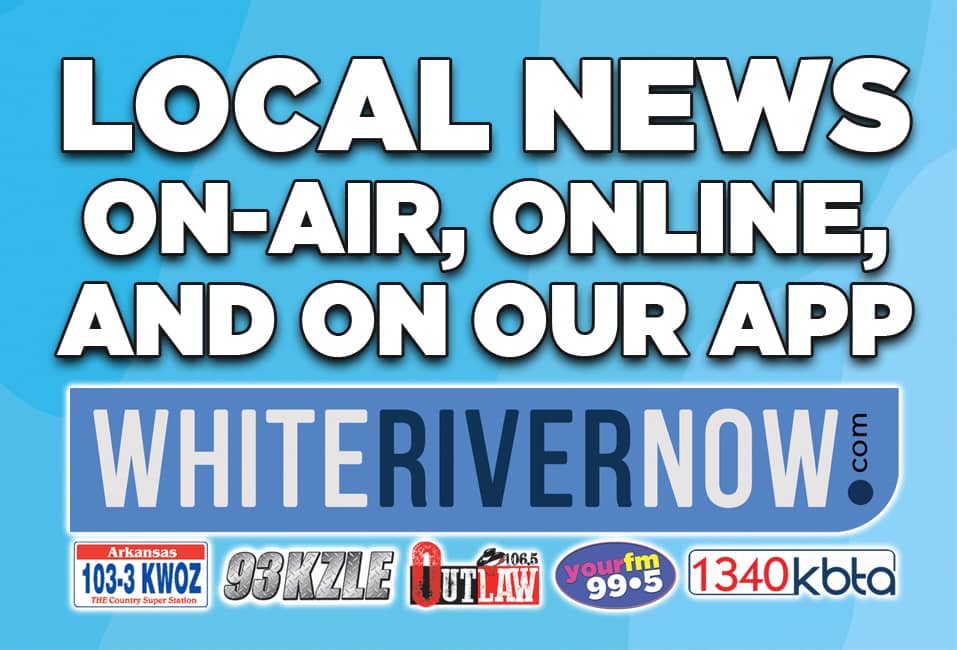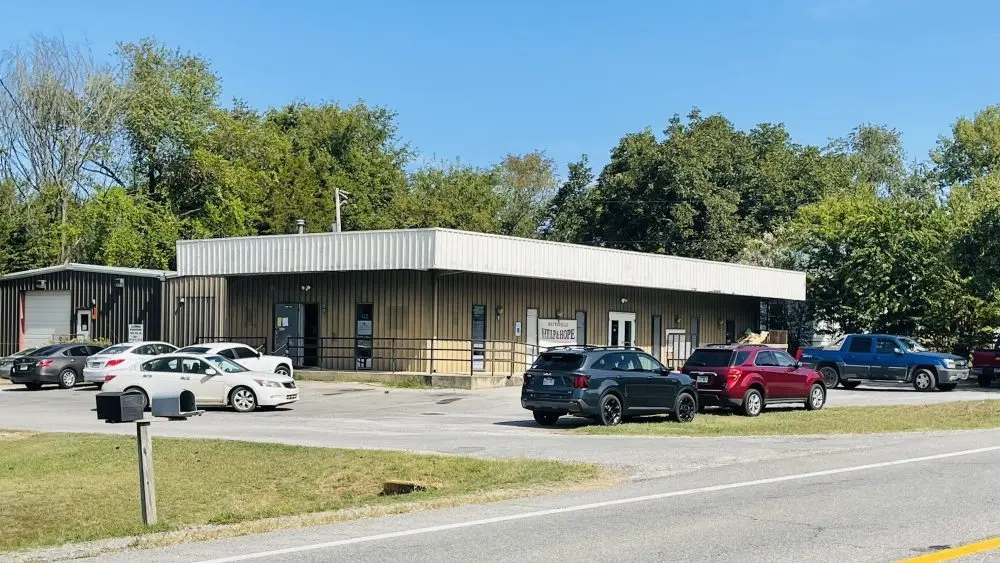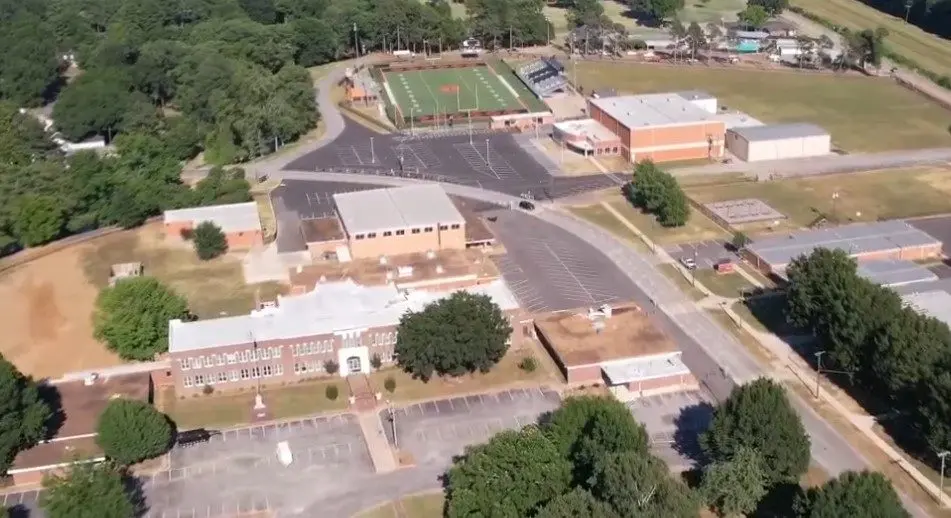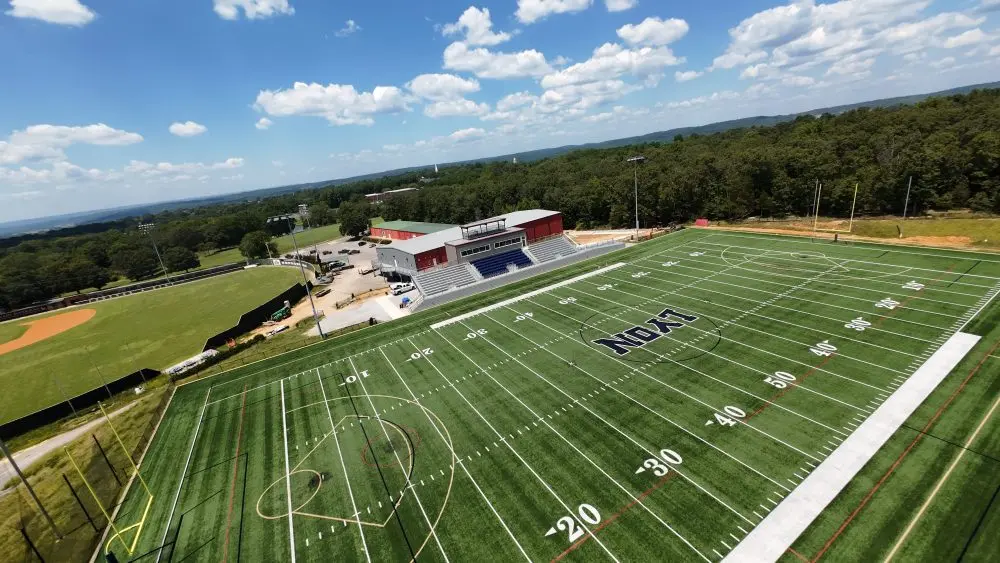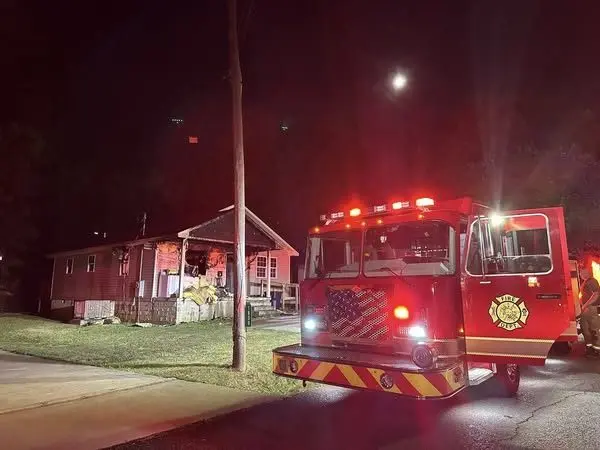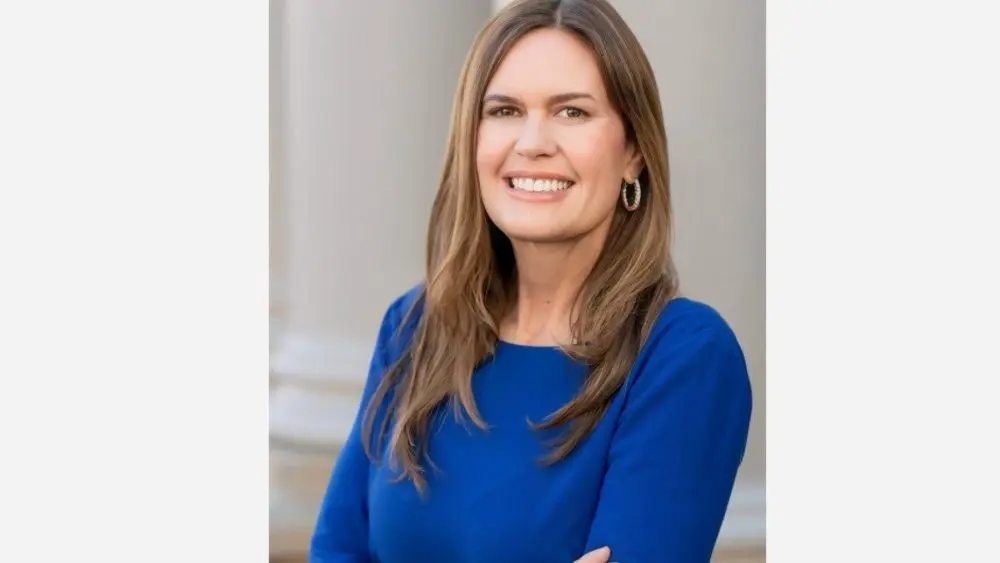“The months I don’t have to go, I don’t go because I feel like somebody needs it more than me.” ~Tobi Melton
By Andrea Bruner, White River Now
For nearly 40 years, Batesville Help & Hope has been providing just what its name says: help and hope.
But the agency – and the assistance it provides – are living on borrowed time.
***
The organization is only open three mornings a week, but it manages to serve an average of somewhere between 800 and 1,000 families or 2,000-2,500 individuals a month, said Tracy Smith, who is the director and the organization’s only paid personnel (which is just a part-time position).
According to statistics obtained from White River Planning and Development District, 13% of Independence County families live under the poverty line. That is about 1,180 families.
Batesville Help & Hope is open Monday, Wednesday and Friday from 8 a.m. to noon and is run mostly by volunteers.
Cheryl Everett is one of the volunteers who helps people sign up and records their information. She said clients do have to show a photo ID, and there are income eligibility guidelines for The Emergency Food Assistance Program (TEFAP). The guidelines are fixed on 200% of the Federal Poverty Guidelines, and are as follows: Family size of 1, $602 a week or $31,300 a year; family size of 2, $813 a week or $42,300 a year; family size of 3, $1,025 a week or $53,300 a year; family size of 4, $1,237 a week or $64,300 a year.
“Sometimes we’ll have up to 10 new ones sign up (in a day),” Everett said.
Families can only come once a month. Some come every month, but others come every now and then when additional help is needed.
Clients are eligible for assistance “as long as their income remains the same,” Everett said. “They can come once a month for a box (of food), and they can get clothing.”
She said one time there was a woman who came in 20 days after receiving a box, saying she needed to feed her children.
“Sometimes we give emergency boxes – they tug at your heartstrings,” Everett said.
Other people have called saying they do not have a ride there, and there have been a few times volunteers have taken boxes to clients.
“When we have produce out here, we started limiting them to one bag of produce,” Everett said. “We’re low on produce right now because so many people have come in, but if we don’t limit the produce, they’ll start piling it in their box and taking all of it. We’ve had to say, ‘You have to leave some – other people want some produce, also.’”
Even the bad produce is not tossed – it’s put into a “hot box” and given to a farmer for chickens.
On a recent Wednesday, Help & Hope served 61 “cases” or households. Of those, 35 were children, 93 were adults, and 26 were senior citizens.
Help & Hope has a few regular volunteers who come in rain or shine, often arriving at 7 a.m., but occasionally they’ll have community service workers to help handle the workload.
“We never know how many community service workers are going to come in, or how many volunteers. Some days it’s just five of us,” Smith said.
There’s always sorting to be done, boxing items, assisting clients as they come in to fill out paperwork, hanging clothes onto the racks, bagging frozen items when available, loading boxes into vehicles, and then of course, unloading food – whether purchased or donated as it arrives.
Help & Hope purchases food through the Arkansas Food Bank in Little Rock (which inspects the local agency twice a year), and some food is bought locally. It also receives donations from three local grocery stores for which volunteers are very thankful.
Smith said she picks up donations every Monday, Wednesday and Friday from Walmart, Kroger, and Aldi.
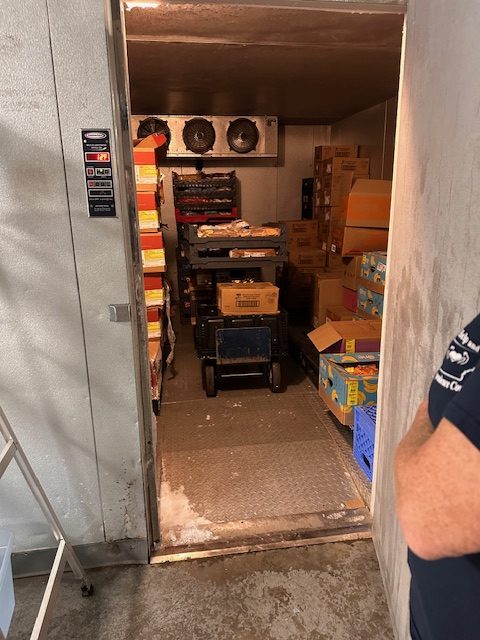
There are two commercial freezers, and on the opposite wall is an upright freezer display case. Smith said when she first came to work at Help & Hope, they would get huge pallets of food once a month that would stock the display cases completely full.
Unfortunately, those days are gone, Smith said, indicating the bare shelves of that same freezer section. “We had a truck not even two weeks ago, and this is what we’ve got left. We still get trucks once a month, but we’re getting basically nothing now.”
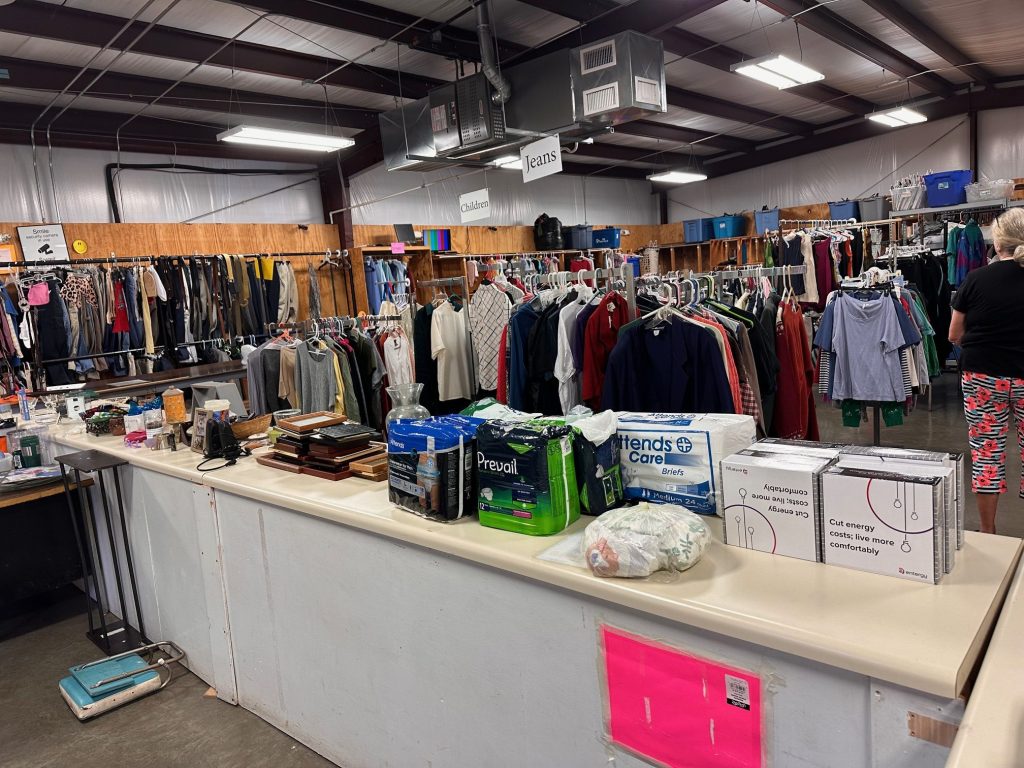
Melinda Sneed runs the back, where the non-food items are stored. Smith said besides clothing and shoes, they will take smaller household goods, including dishes, glassware, incontinence briefs and other personal items, books, etc., and recently received some weatherstripping materials from the food bank.
One time, someone had donated a Christmas tree and Smith said a woman asked about it. When Smith told her she could have it, the woman cried, saying her kids feared that Santa wouldn’t come that year because they didn’t have a tree.
In recent years, Help & Hope has partnered with the Alpha Center to provide food to expecting mothers in need, and it also furnishes snacks to the county library for the teen program – items that may not be suitable to give to its own clients because packages were open or other reasons.
For instance, last month one of the grocery stores had donated cases of prepackaged cookies that were opened at the seam and thus were not able to be sold. While the unopened cookie packages were stocked on the shelves for Help & Hope clients, volunteers placed the opened packages into gallon-size baggies to be taken to the library.
“We take them quite a bit (of food),” Smith said, indicating a table full of groceries that had been accumulated just within a week’s time, all earmarked for the library.
“And they’ll go through it – there’s so many kids who come,” said Sarah Jones, one of the newest volunteers at Help & Hope. “Some of it can be taken home, like the fruit cups.”
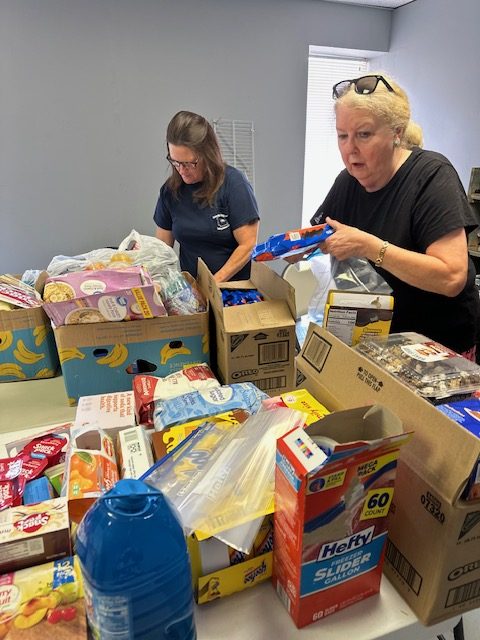 Batesville Help & Hope Director Tracy Smith (left) with Sarah Jones, a volunteer, sorting through items that will be taken to the Independence County Library for the teen program.
Batesville Help & Hope Director Tracy Smith (left) with Sarah Jones, a volunteer, sorting through items that will be taken to the Independence County Library for the teen program.
They credited with Help & Hope Board Secretary Sloane Lott with starting the food program for teens at the library about three years ago.
“I remember when Sloane first started this, they would get those little cups of macaroni and cheese, and she said the kids would eat three of those,” Jones said.
Even though Help & Hope is struggling for donations themselves, they are doing what they can to help other organizations and reach as many people in the community as possible, Smith said.
***
Tobi Melton is one of them.
“They help a lot of people that don’t have any other way to go and get stuff,” Melton said. “Just like me – I had to debate on whether to get food or my medicine because I’m disabled.”
Melton said she’s been a client at Help & Hope “on and off for several years.”
“You get your box home and think, oh my goodness I’m so glad that’s in my box – like eggs, they are so expensive now. It’s nice to get things you don’t normally get.”
She said the first time she went, she cried when she left. She never thought she’d been in a situation where she had to ask for help, but everyone is so friendly, and no one made her feel ashamed. “It’s hard for me to ask for any kind of help,” Melton said. “They’ve been the same from day one to now; the guys are willing to carry your box out there (to the car).”
She said one time she was moving things around in her car and had a box of clothes she was going to donate to another charity, but she asked the volunteer carrying her food out if they wanted them for Help & Hope. The volunteer agreed, saying they would “trade.”
Melton said she can see a difference in the donations before Covid and after. “They need help because they’re helping other people that can’t help themselves – times are getting harder,” she said.
“The months I don’t have to go, I don’t go because I feel like somebody needs it more than me,” Melton added.
***
Batesville Help & Hope started in 1987 when a group of people realized the need for a single organization that would combine the food pantries and clothes closets of several churches into one centralized program.
There is an organization with a similar name, Christmas Brings Hope, that is totally separate, and many people get the two confused. Christmas Brings Hope provides food baskets to the needy at Christmas, but Batesville Help & Hope runs all year long. Help & Hope was incorporated in 1987 and was originally located in a vacant store building. But within seven years, it had outgrown the first building and moved into a larger facility, located at 2622 East Main St., where it remains today.
Up until this year, Help & Hope – like many agencies in the community – received a substantial amount of its funding from the local United Way.
In the 1970s, the Batesville Area Chamber of Commerce discussed establishing a United Way chapter to consolidate the number of fund drives in the community to avoid duplicating efforts and expenses.
Incorporated in December 1980, United Way set a goal for its first campaign of $75,000. It actually raised over $125,000. In 2000, its goal was to raise $400,000, while in 2020 the campaign raised $235,000.
In 2015, United Way changed its name to United Way of North Central Arkansas, as it was serving Izard, Sharp, Stone, and northern Cleburne counties. The organization disbanded in January 2025.
For years, the United Way of Independence County funded agencies like the Angel Tree, American Red Cross, Big Brothers Big Sisters, CHILDREN of Northcentral Arkansas, Ozark Foothills Literacy Council, The Community School Inc., local Boy Scouts and Girl Scouts, Family Violence Prevention, 4-H, Legal Aid of Arkansas, Independence County Senior Citizens Program, Independence County Single Parent Scholarship Fund, Independence County Youth Athletic Association, Court Appointed Special Advocates (CASA), Arthritis Foundation, and more.
Some years, the recipients were changed out, but Help & Hope was usually among them.
Retired educator Gary Anderson serves as the board’s treasurer. Besides Lott, other board officers are Andrew Brock, president, and Jared Cook, vice president.
Anderson said during Covid, everything took a hit – and that includes United Way.
When the United Way ceased, that meant Help & Hope would be operating strictly on donations, and as Anderson said, donations have dropped significantly since Covid.
“The budget is about $55,000-60,000, and that’s the minimum budget to keep the doors open,” he said.
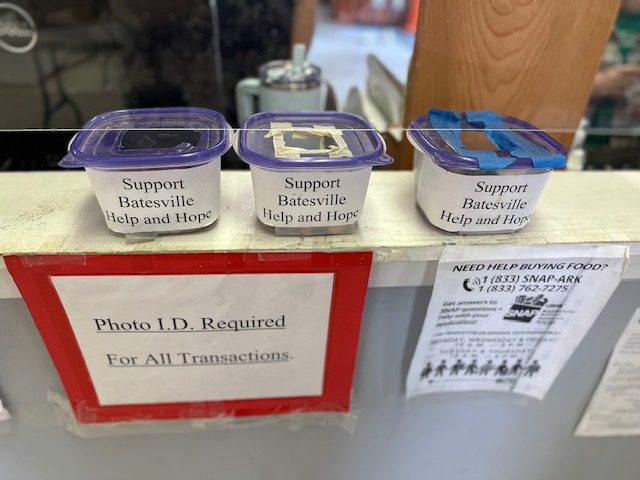
Help & Hope, which he said is the only food pantry in Independence County associated with the Arkansas Food Bank, had some savings but has had to dip into that over the last two years for operating funds.
“That’s to keep the lights on and the basic operating funds. If a freezer quits or the transmission on the van goes out, any major capital outlay or repairs, then we can’t do it,” he said.
Right now, there are only two churches that support Help & Hope every month, although a third does provide funds every now and then. They also receive money from private individuals, a few local banks and businesses, as well as the local CEO group.
“But the point is, there’s nothing sustainable,” he said.
Anderson said they have applied for grants, and when Habitat for Humanity ceased it sent its remaining balance to Help & Hope. “It’s hit or miss, and it’s hard to keep money for operations, much less improvements. This is a big building, with a lot of air conditioners, a lot of electricity. …
“If contributions don’t continue to come in at acceptable levels,” the future looks bleak, and according to Anderson, “This is too critical of a link for people in need.”
Not all of their clients get SNAP (formerly known as food stamps), and while schools offer backpack programs that send food home with kids over weekends and holiday breaks and many churches have a pantry or blessing box, “people still fall through the cracks. They either don’t know or don’t qualify,” Anderson said.
“I imagine we’re not very different from other local nonprofits,” Cook said. “Giving toward organizations like us has changed in general since Covid. There’s a lot of competition out there right now to give money to, and they’re all worthwhile causes.”
Smith said the most requested item is meat, and she orders all the meat she can from the food bank, but it goes fast.
Cereal is also a hot ticket item. Anderson said First Community Bank and its employees held a cereal drive and brought in a huge donation.
“It was a lifesaver at the time,” Anderson explained. “We’ve operated on miracles that have come out of the sky.”
“Safety nets are great, but they only go so far,” Cook said.
“We’re a very critical bridge to the community that needs help,” Anderson said.
***
Batesville Help & Hope may be reached at 870-793-9181.
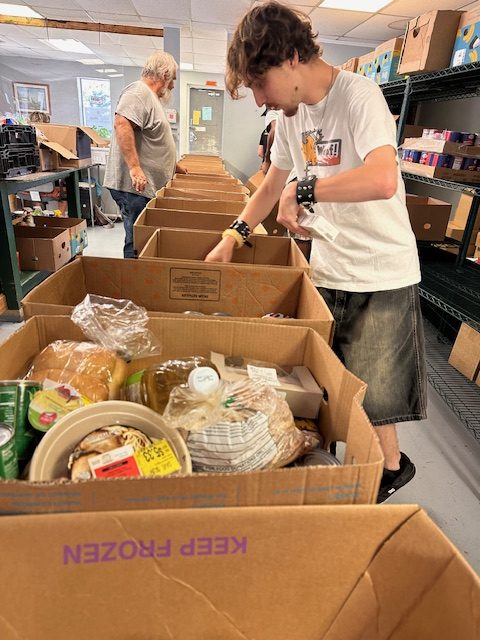
Images by Andrea Bruner, White River Now
Have a news tip or event to promote? Email White River Now at news@whiterivernow.com. Be sure to like and follow us on Facebook and Twitter. And don’t forget to download the White River Now mobile app from the Google Play Store or the Apple App Store.
Get up-to-date local and regional news/weather from the First Community Bank Newsroom on Arkansas 103.3 KWOZ every weekday morning and afternoon. White River Now updates are also aired on weekday mornings on
93 KZLE, Outlaw 106.5, and Your FM 99.5. Catch CBS News around the top of every hour on 1340 KBTA.
